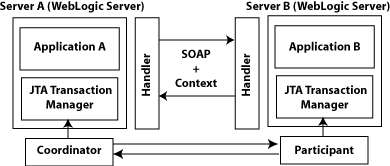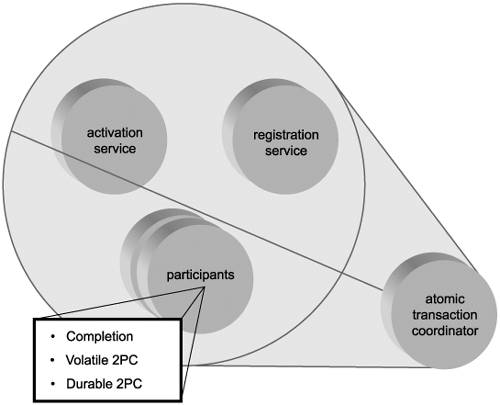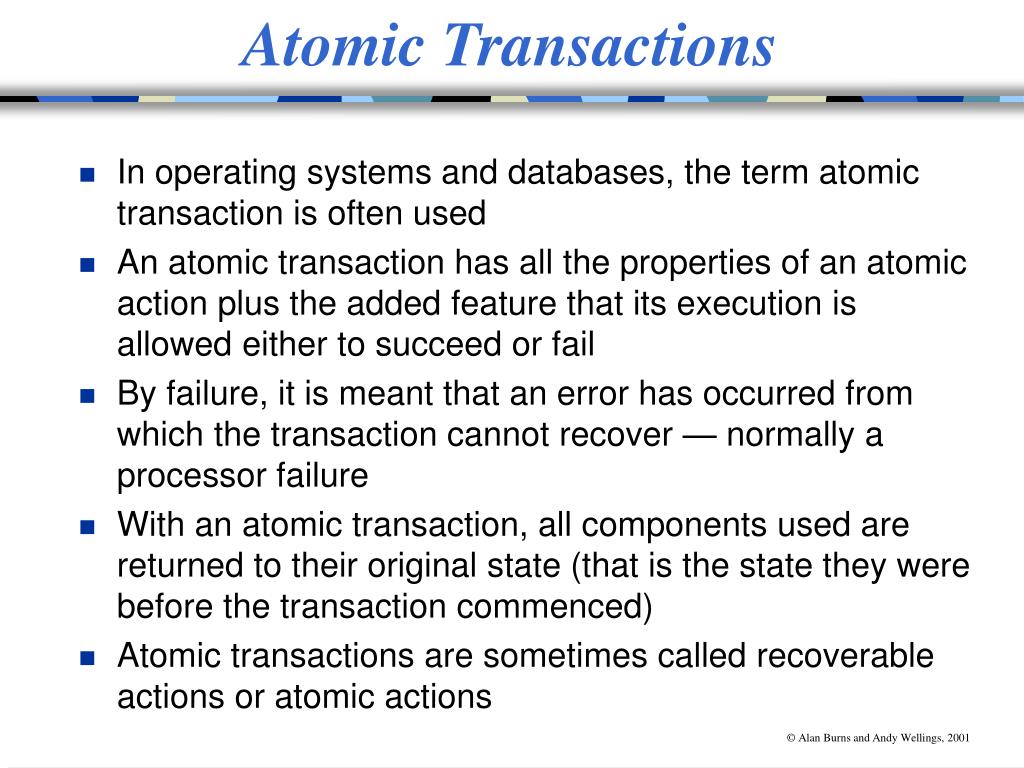
The hardware level requires atomic operations such as Test-and-set, Fetch-and-add, Compare-and-swap, or Load-Link/Store-Conditional, together with memory barriers. At the process level, POSIX Threads provide adequate synchronization primitives. At the file-system level, POSIX-compliant systems provide system calls such as open(2) and flock(2) that allow applications to atomically open or lock a file. Ultimately, any application-level implementation relies on operating-system functionality. complete success or complete failure – remain. Although implementations vary depending on factors such as concurrency issues, the principle of atomicity – i.e. Afterwards, crash recovery ignores incomplete entries. The system synchronizes the logs (often the metadata) as necessary after changes have successfully taken place. Databases usually implement this using some form of logging/journaling to track changes. Several filesystems have developed methods for avoiding the need to keep multiple copies of data, using journaling (see journaling file system). Typically, systems implement Atomicity by providing some mechanism to indicate which transactions have started and which finished or by keeping a copy of the data before any changes occurred ( read-copy-update). For example, isolation relies on atomicity to roll back the enclosing transaction in the event of an isolation violation such as a deadlock consistency also relies on atomicity to roll back the enclosing transaction in the event of a consistency violation by an illegal transaction.Īs a result of this, a failure to detect a violation and roll back the enclosing transaction may cause an isolation or consistency failure. The same term is also used in the definition of First normal form in database systems, where it instead refers to the concept that the values for fields may not consist of multiple smaller value to be decomposed, such as a string into which multiple names, numbers, dates, or other types may be packed.Ītomicity does not behave completely orthogonally with regard to the other ACID properties of transactions.

Performing these operations in an atomic transaction ensures that the database remains in a consistent state, that is, money is neither lost nor created if either of those two operations fails. It consists of two operations, withdrawing the money from account A and saving it to account B. At one moment in time, it has not yet happened, and at the next it has already occurred in whole (or nothing happened if the transaction was cancelled in progress).Īn example of an atomic transaction is a monetary transfer from bank account A to account B.

As a consequence, the transaction cannot be observed to be in progress by another database client.
#Atomic transaction definition series
A guarantee of atomicity prevents updates to the database occurring only partially, which can cause greater problems than rejecting the whole series outright. An atomic transaction is an indivisible and irreducible series of database operations such that either all occurs, or nothing occurs. In database systems, atomicity ( / ˌ æ t ə ˈ m ɪ s ə t i/ from Ancient Greek: ἄτομος, romanized: átomos, lit.'undividable') is one of the ACID ( Atomicity, Consistency, Isolation, Durability) transaction properties. JSTOR ( April 2020) ( Learn how and when to remove this template message).


Unsourced material may be challenged and removed.įind sources: "Atomicity" database systems – news Please help improve this article by adding citations to reliable sources. In our view, it is more useful to define atomic settlement as being equivalent to simultaneous settlement.This article needs additional citations for verification. Regardless of what the market decides regarding the benefits of instant settlement, this post argues that it seems desirable to keep separate the concepts of instant and simultaneous settlement, rather than combine them into one definition. While instant settlement may be desirable for some trades in some markets, such settlement may not be desirable in all cases as it may come with drawbacks. DLT platforms may allow for an expanded set of DvP settlement, for instant settlement, or for both at once. New technologies have the potential to modify the way financial transactions are settled. But what exactly is atomic settlement? In this post, we explain that atomic settlement, as it is often defined, combines two distinct properties: instant settlement and simultaneous settlement, which should be kept separate. Indeed, several recent private sector projects (SDX, Fnality, HQLAx) aim to do just that. One purported benefit of DLTs is their ability to bring about “atomic” settlement. Distributed ledger technologies (DLTs) have garnered growing interest in recent years and are making inroads into traditional finance.


 0 kommentar(er)
0 kommentar(er)
